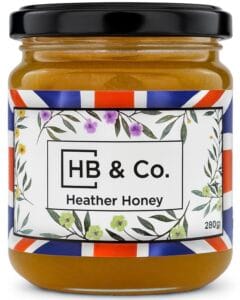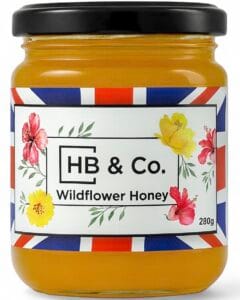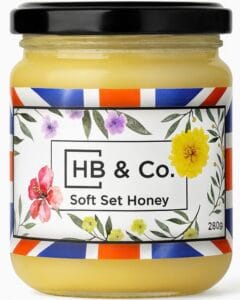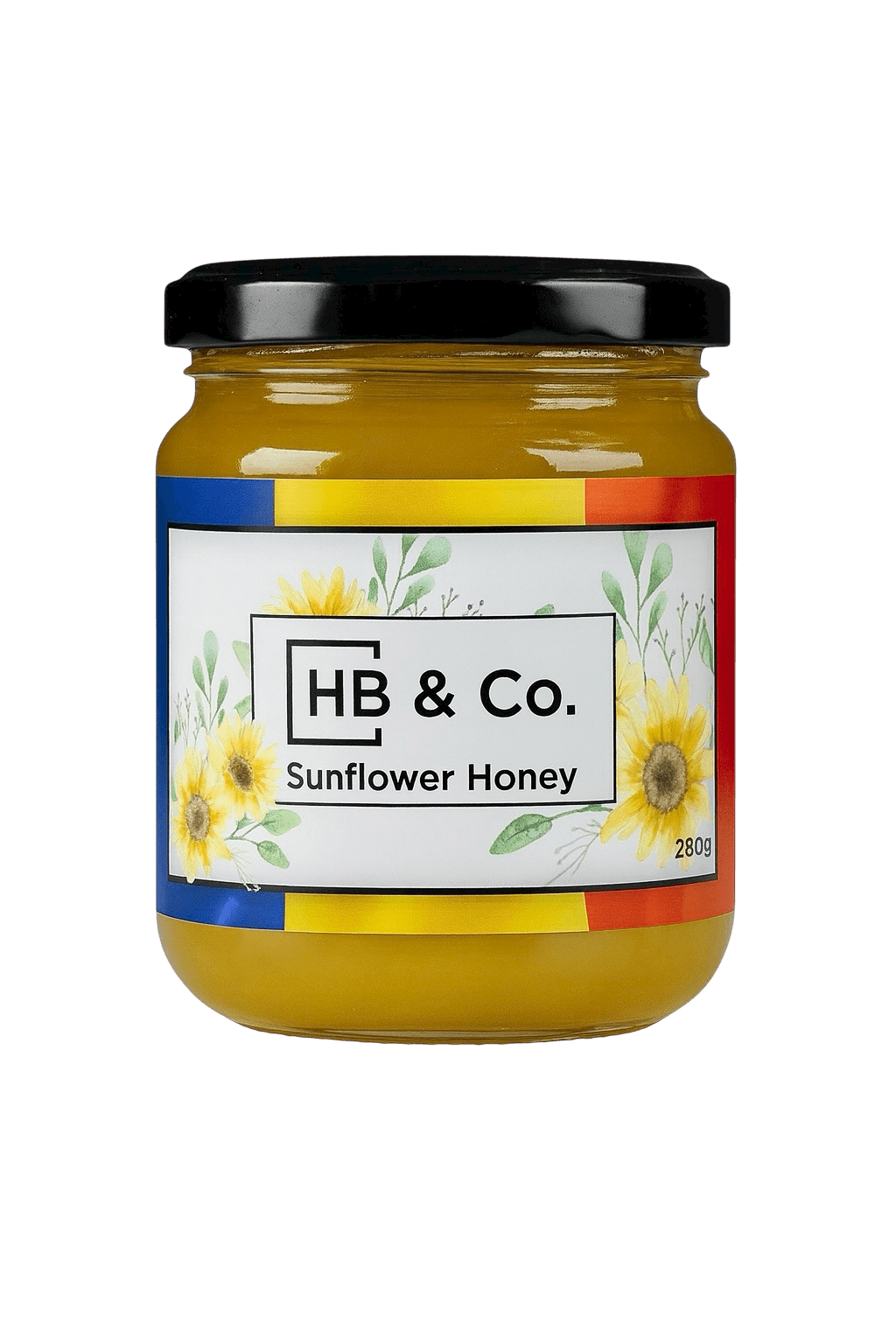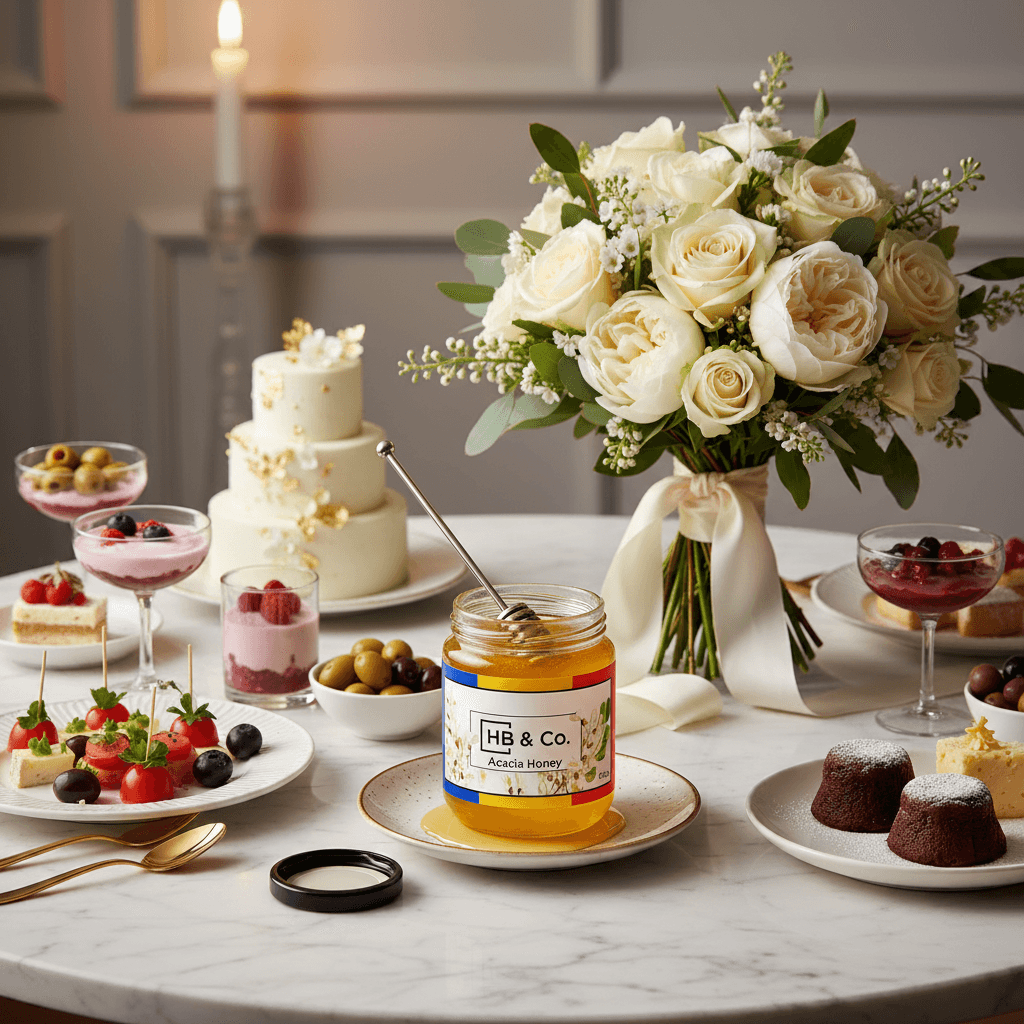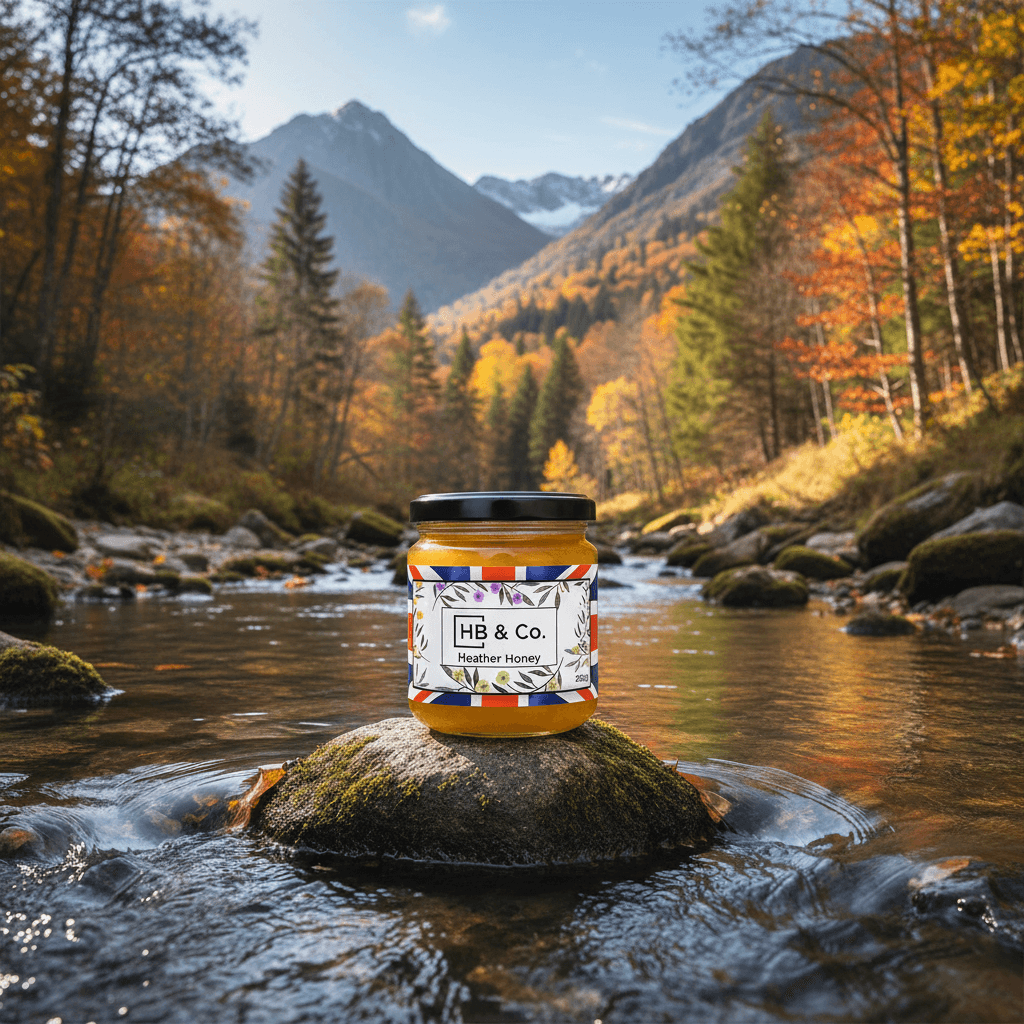British Honey
Our British Honey
SALSA Certification for our British Honey Supplier

Our British honey supplier holds the prestigious Salsa Certification, a robust and effective food safety certification scheme tailored for smaller food producers and suppliers.
This certification attests that they adhere to industry-recognized standards that surpass the minimum requirements set by regulatory authorities.
To achieve SALSA approval, suppliers must demonstrate to auditors that they consistently produce and supply safe and legal food, and are committed to upholding the stringent SALSA standard. Founded as a non-profit venture by three major trade associations in the UK Food Chain, SALSA is overseen by the Institute of Food Science and Technology (IFST).
Their purpose is to offer affordable food safety assurance certification and support for small and micro businesses in the United Kingdom. Embodying values like prioritizing safe food practices, affordability, building supportive relationships, offering practical guidance, and promoting teamwork and collaboration, SALSA is instrumental in maintaining high-quality food safety standards in the industry.
British Honey Heritage
Discover the Rich Flavours of British Honey
Honey in Britain is as much about place as it is about taste. From wind-brushed heather moors to hedgerow-laced Midlands pastures, bees gather nectar that carries the story of the landscape straight into the jar. Each spoonful reflects soil, weather, plant life and the careful work of beekeepers who read the seasons like old friends.
What makes British honey so distinctive
Britain’s patchwork of habitats gives honey remarkable variety. Acidic peat on the upland moors fosters ling heather with a resinous perfume; rich lowlands and mixed farmland encourage clover, bramble and lime blossom; towns hum with herb-filled gardens and sweet chestnut avenues. All of it matters.
- Climate shapes flavour: cool nights help retain volatile aroma compounds, while short nectar flows can intensify character.
- Soil affects plant chemistry: peat and gritstone uplands tend to produce richer, darker honey; chalk and loam often lead to lighter colour and a gentler palate.
- Seasonal succession builds complexity: apple and hawthorn in spring, clover and bramble in summer, ivy as a late-season lifeline.
British honey also carries a human touch. Beekeepers move hives to follow blossoms, keep careful records of flows, and work with the weather rather than against it. That harmony of place and practice gives British honey its sense of identity.
Meet three classic British honeys
HoneyBee & Co. focuses on varieties that express their regions beautifully. Each has its own personality, and all reward slow tasting.
Heather honey from the Yorkshire Moorlands
Ling heather thrives on upland moors where soils are acidic and summers are short. The result in the jar is a dark amber honey with a glint of red and a texture that is famously thixotropic, almost like a soft jelly. Stirring releases the aroma of warm heather, wood and a touch of resin.
On the palate it is bold and layered. A caramelised depth, hints of cocoa and a faint bitter finish give it a refined savoury edge. It is less sugary than many runny honeys and thrives alongside strong flavours.
Try it:
- Drizzled over blue cheese or mature Cheddar
- Brushed on game or lamb during the final minutes of roasting
- Whisked into a glaze for roast root vegetables
- Spoon-warmed over oatcakes with a scatter of toasted hazelnuts
Soft set honey
Soft set, sometimes called creamed, is about texture rather than nectar source. Controlled crystallisation yields a smooth, spreadable consistency with a fine grain that sits neatly on toast instead of running off the edges. The flavour is the flavour of its base honey, simply presented on a buttery-soft canvas.
It is a breakfast favourite, but it also shines in baking and patisserie where a plush mouthfeel makes all the difference.
Try it:
- On warm crumpets or sourdough
- Swirled through yogurt or porridge
- As a filling for layer cakes or honey buns
- Beaten with butter and a pinch of sea salt for a quick honey butter
Midlands wildflower honey
Midlands wildflower honey captures the meadow. Expect a pale to mid-amber colour that varies with season, a bright, floral nose, and a light taste with soft fruit and herb notes. It is pourable, friendly and versatile.
It brings a lift to everyday cooking without taking over.
Try it:
- Stirred into tea or drizzled on granola
- In vinaigrettes for leafy salads
- In sponge cakes or light batters
- Alongside fresh cheese, berries and toasted nuts
A quick side-by-side
| Variety | Region | Colour | Aroma | Flavour | Texture | Kitchen ideas |
|---|---|---|---|---|---|---|
| Heather | Yorkshire Moorlands | Dark amber with red highlights | Heather flowers, wood, resin | Robust, caramel-like with a gentle bitter finish | Thick, jelly-like, needs stirring | Cheese boards, game glazes, oatcakes, rich desserts |
| Soft set | UK floral sources | Pale gold to light amber | Mild blossom on a creamy backdrop | Sweet and gentle, depends on base nectar | Smooth, spreadable, fine crystals | Toast, crumpets, patisserie, honey butter |
| Wildflower | Midlands | Pale to mid amber | Summer meadow, light fruit, herbs | Bright and delicate, easy-going | Pourable, crystallises smoothly over time | Tea, baking, dressings, soft cheeses |
How to taste British honey like a pro
A little attention reveals a lot.
- Warm the jar slightly in your palms to coax out aromatics.
- Smell first. Look for floral, woody, herbal or fruity notes.
- Taste a small amount and let it melt across your tongue. Notice sweetness level, acidity, bitterness and any savoury tones.
- Pay attention to finish. Heather can linger with cocoa or resin; wildflower often fades to a clean floral echo.
- Rinse with cool water and repeat.
Consider a mini flight: start with Midlands wildflower, move to soft set, finish with heather.
From skep to super: the craft behind British honey
Britain’s beekeeping story stretches from straw skeps to meticulous frame hives. Skeps once sat in garden bee boles and were harvested by cutting comb. Modern practice keeps the colony intact with movable frames, careful hygiene and seasonal management.
- Spring: colonies build up on willow, fruit blossom and early hedgerow flowers. Beekeepers add space to prevent swarming and may split strong hives.
- Early summer: nectar flows from clover, bramble and lime. Supers fill, frames are uncapped and spun to extract the honey.
- Late summer: in the north, hives may go to the heather. Heather honey resists spinning and often needs pressing or agitation before bottling.
- Autumn and winter: ivy sustains bees late in the year. Inspectors and keepers focus on health, stores and protection from the weather.
Care never stops. Monitoring for Varroa mites, renewing queens with good temperament and resilience, and working with local forage plans are part of the modern toolkit.
British beekeepers, challenges and guardianship
The community that produces British honey is both skilled and deeply connected to place. Their challenges are real, which is why every local jar carries significance.
- Health threats: Varroa mites require regular, informed control. Foulbrood diseases are rare but serious, with inspection and swift action when needed.
- Habitat pressure: fewer wildflower meadows and tidier verges can mean lean forage. Many beekeepers plant, campaign and partner with farmers to restore nectar-rich margins.
- Climate swings: late frosts, sudden heat, long wet spells. Flexibility in hive management and a keen eye on stores keep colonies thriving.
- Invasive predators: sightings of Asian hornet are taken seriously. Rapid reporting and nest removal protect honeybees and other pollinators.
Buying British honey supports this network of craft and care. It funds training, habitat projects and the quiet, everyday stewardship that keeps bees healthy.
Heritage in every spoonful
Honey has deep roots in British life. Mead echoes through Celtic lore, monasteries once relied on beeswax for light, and villages held honey shows to celebrate the harvest. Old traditions survive in gentle ways, including the custom of “telling the bees” about family milestones.
That heritage still hums today. County shows give space to honey classes and observation hives for children. City councils plant for pollinators. The emblem of the worker bee appears in civic art and school badges as a nod to cooperation and industry.
Working with each honey in your kitchen
British honey is a cook’s ally. The key is to match intensity with intensity.
Heather honey
- Strong cheese boards or charcuterie
- Dark chocolate desserts where a hint of bitterness brings balance
- Game, lamb or mushrooms in glazes and pan sauces
Soft set
- Breakfasts that benefit from a spreadable sweetness
- Buttercream, Swiss rolls and macarons
- Quick sweetening for warm milk or chai
Wildflower honey
- Light sponge cakes and biscuits
- Citrus dressings and marinades for chicken or fish
- Fresh fruit, ricotta or natural yogurt
Two quick recipes:
- Heather and Stilton oatcakes: spread a thin layer of heather honey on warm oatcakes, crumble over Stilton, add cracked black pepper and thyme.
- Midlands wildflower vinaigrette: 1 tsp wildflower honey, 1 tsp grain mustard, 2 tbsp cider vinegar, 6 tbsp cold-pressed rapeseed oil, salt and pepper. Shake until glossy.
Buying British honey with confidence
A few simple checks help you pick well and look after your jar.
- Look for clear floral origin and region on the label. The more specific the better.
- Crystallisation is natural. If you prefer it runny, stand the jar in a bowl of warm water and stir gently.
- Avoid high heat if you want to preserve aroma. A gentle warm is enough.
- Store in a cool, dark cupboard with the lid tight. Do not refrigerate.
- Choose glass for long-term storage and to protect flavour.
Soft set honey deserves a special note. Its texture depends on fine crystals seeded into the honey, not on added dairy or thickeners. It stays style-consistent at room temperature and remains spreadable even through winter.
Why heather, soft set and wildflower belong together
Think of these three as a complete British honey collection.
- Heather brings intensity and drama. One spoon changes a dish.
- Soft set offers comfort and convenience. Breakfast becomes a small luxury.
- Wildflower brings everyday brightness. It sweetens without shouting.
Serve all three at a tasting: pour wildflower into a little jug, place soft set in a shallow bowl with a small spoon, and set a warm spoon next to the heather jar. Offer plain yogurt, sliced apples, crumbly cheese and oatcakes. Guests will taste the countryside in a single sitting.
Sustainability in practice
Good honey depends on healthy bees. Many British beekeepers take part in projects that make a difference on the ground.
- Planting nectar corridors with farmers and local councils
- Leaving verges to flower before mowing
- Supporting late-season plants like ivy and sedum so colonies carry strong stores into winter
- Sharing data on pests and disease to improve regional resilience
- Teaching new beekeepers careful, humane methods
You can help too. Plant lavender, thyme, marjoram, heather, phacelia and native wildflowers. Let a corner of the lawn bloom. Choose hedgerow species when replanting. Small gestures add up across a village or a city block.
A note on authenticity and purity
British honey must be 100 percent honey with no additives. Monofloral claims, like heather, rely on flavour, colour and pollen profile, backed by careful harvesting at the right time. Wildflower and soft set are celebrated for being true to the season and the base nectar. That honesty is part of why local jars taste so alive.
If you are comparing honeys, pay attention to:
- Aroma complexity rather than raw sweetness
- Mouthfeel that suits the variety
- The way flavour evolves from first taste to finish
- How it behaves in hot tea or on warm toast
Bringing British honey home
Stock three jars and you are set for breakfast, baking and entertaining. Use heather to elevate cheese and roast dinners. Keep soft set by the toaster for quick comfort. Pour wildflower into everyday cooking and dressings. Each is a postcard from its landscape, captured by bees and bottled with care.
And when you twist the lid, pause for a brief moment. Somewhere on a moor, in a garden or along a Midlands hedgerow, the hum that made this jar is still at work.
Your Questions Answered
No. HoneyBee & co Honey is Raw Honey. Exactly how bees have made it.
No. Our Acacia Honey is produced in pure and uncontaminated natural areas and our bees are not treated with antibiotics.
Our Acacia Honey contains an Optimal water percentage between 15% and 19%. Cheap supermarket honey can have up to 50% water. This is due to either beekeeper feeding bees water with artificial sugar or they collect the honey to quickly to increase profit margins.
Nectar is a liquid secretion of flowers that bees gather. They then take out much of its water content and after adding several enzymes they produce the golden substance we call honey.
Consuming honey rather than sugar has obvious advantages. The supply to the body of energy in the form of glucose and fructose, simple sugars that do not require any digestive process. Honey also contains Vitamins and other useful enzymes.
Raw Honey is a product with many calories; approximately 320 kcal for 100g. Moderation is the key if one has a particular diet. The positive fact about honey is its sweetness. One teaspoon of honey weighs about 7g and its more than enough to sweeten your favourite cup of tea.
Raw Honey is safe and it provides many health benefits, nevertheless, it should not be cooked raw over 40 degrees. When cooked, honey becomes similar to glue and thus produces toxins. Honey's raw form is the one detaining all its main benefits and properties. By altering its chemical composition by heating or overheating the honey It may completely change its compounds leading to health hazards. Honey also contains bacteria that can harm a young baby’s intestine. To this end avoid giving honey to babies under 12 months old.
Our bees are from the Apis Mellifera from the Apidae family.
Our honey is produced on the European Continent. Our long-term goal is to partner with small beekeepers from all over the UK and Europe providing our customers with quality honey while helping increase the European bee population.
Acacia Honey Stimulates digestion cleans the liver, regulates intestinal transit. Improves heart activity and circulatory system. Helps to restore the body after effort. Stimulates the immune system. The number of red blood cells increases.
Honey is a healthier alternative to sugar, especially for diabetics. It has antioxidants that help reduce the risk of heart attacks, strokes, and some types of cancer. It lowers blood pressure and improves cholesterol values. Honey is great for healing wounds and burns.
Honey is a great solution for coughs both for children and adults.
The Hive
Interesting news, commentary, lifestyle, and all things Bees - have you got the buzz?

